Summer sale discount off 50%! Shop Now
Currency
Secrets Behind the Kelly Bag: The Art and Craftsmanship of an Iconic Hermes Bag
- Home
- ReplicaX Blog | Style Guides and Insider Secrets
- Secrets Behind the Kelly Bag: The Art and Craftsmanship of an Iconic Hermes Bag
Secrets Behind the Kelly Bag: The Art and Craftsmanship of an Iconic Hermes Bag
Sep 15, 2025
By
Sophia Whitmore
0 comment(s)
Introduction to the Hermès Kelly Bag
Few fashion pieces inspire the kind of awe reserved for the Hermès Kelly bag. It is more than a handbag. It is a symbol of skill and patience. What makes it stand out isn’t simply the Hermès name or its scarcity but the 18–24 hours of handwork. Each Kelly bag is created by hand, assigned to a single artisan who takes it from raw leather to finished masterpiece. On average, the process takes between 18 to 24 hours of concentrated, precise work—but that’s only the hands-on time. When you factor in leather selection, hardware sourcing, and rigorous quality control, each bag represents weeks of preparation.
Unlike bags from other luxury houses that might rely heavily on machines, the Kelly exists because of human hands, trained eyes, and skills passed down through generations of craftsmen. For many collectors, owning a Kelly is not about showing off wealth—it’s about appreciating what true craftsmanship looks like in a world driven by speed and convenience.
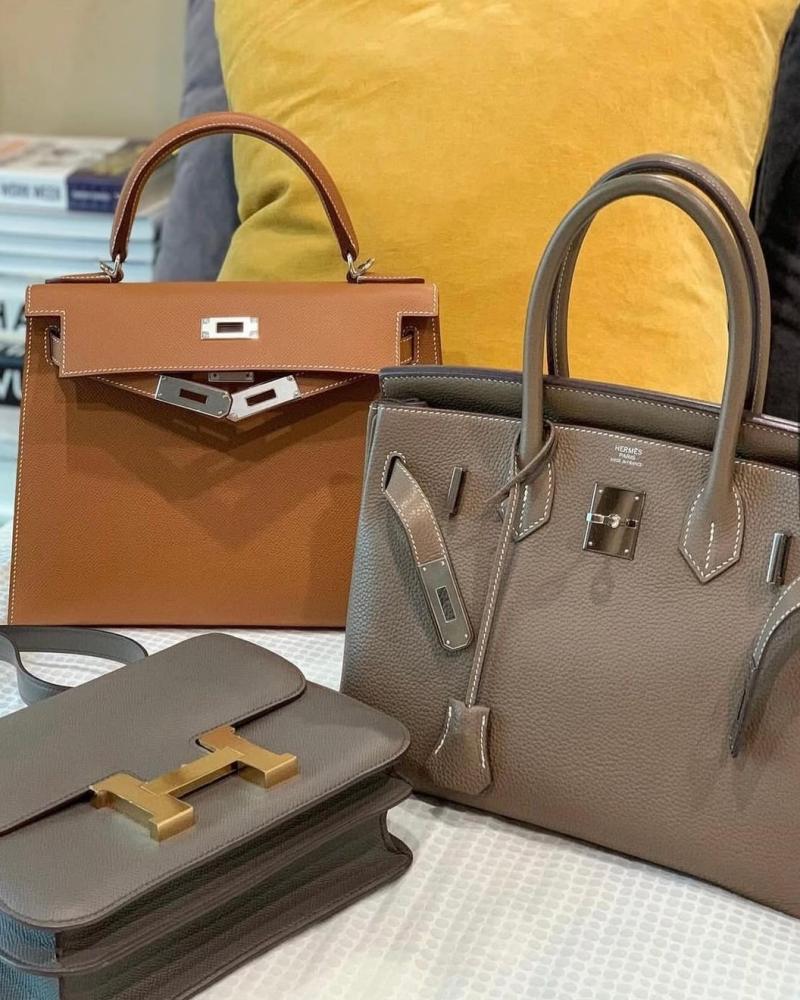
Why the Kelly Bag Holds a Legendary Status
The Kelly represents more than fashion—it’s a cultural icon. For decades, it has been spotted on royalty, Hollywood stars, and powerful figures, becoming shorthand for elegance and restraint. Where other designer bags are produced in large numbers to meet demand, the Kelly is produced in limited quantities. Its exclusivity, combined with meticulous production standards, elevates it beyond a handbag and into the realm of collectible art.
The Grace Kelly Connection
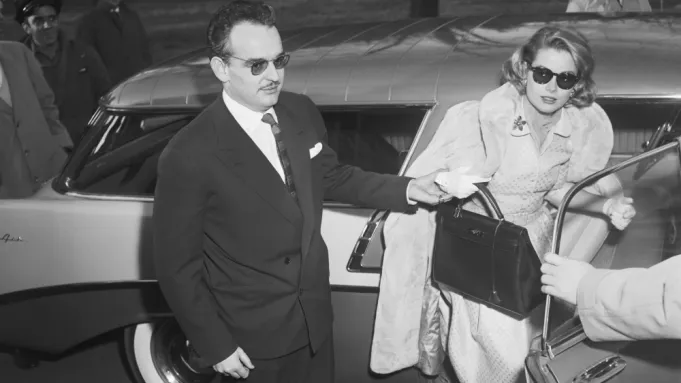
The turning point in the Kelly’s history was a single photograph. In 1956, Grace Kelly, then Princess of Monaco, was photographed shielding her baby bump with the bag. The photo graced magazine covers worldwide and sparked a frenzy. Hermès officially renamed the Sac à dépêches the “Kelly” to honor her, and the rest is fashion history. The story illustrates how the bag straddles two worlds: it’s both practical—used by a princess to hide her pregnancy—and symbolic, forever tied to an icon of grace and refinement.
History and Origins of the Kelly Bag
To understand the Kelly, you have to appreciate Hermès’ long history. Founded in Paris in 1837 by Thierry Hermès, the brand began as a workshop specializing in saddles and harnesses for horses. This heritage explains why Hermès products emphasize durability, stitching, and structure—qualities essential to equestrian gear and later transferred to luxury handbags.
From “Sac à dépêches” to Kelly Bag
In the 1930s, émile-Maurice Hermès introduced the “Sac à dépêches,” a trapezoid-shaped bag with a single top handle. Unlike dainty evening clutches popular at the time, it was practical yet stylish. The bag’s evolution into the Kelly reflects how Hermès adapted its heritage products for new audiences, turning a simple leather bag into a global symbol of status.
How Hermès Bags Became Synonymous with Luxury
By the mid-20th century, Hermès was already renowned for its silk scarves and leather goods, but the Kelly elevated the brand into an elite tier. What differentiated Hermès from competitors was not flashy logos or mass advertising but an insistence on understated craftsmanship. While other brands leaned into mass recognition, Hermès cultivated an aura of exclusivity, where the bag itself spoke louder than any marketing campaign.
The Philosophy of Kelly Bag Craftsmanship
Hermès doesn’t just make bags; it preserves traditions. The Kelly embodies this philosophy perfectly. Each bag is a collaboration between artisan skill and brand legacy.
One Artisan, One Bag Tradition
The single-artisan approach is unusual in modern luxury. In most workshops, tasks are divided: one person cuts leather, another stitches, and another handles hardware. Hermès believes splitting the process dilutes the soul of the bag. Instead, giving one artisan full responsibility ensures consistency and pride. It also means that each Kelly reflects not just Hermès’ standards, but the unique touch of the craftsperson behind it.
Why the Saddle Stitch Defines Hermès
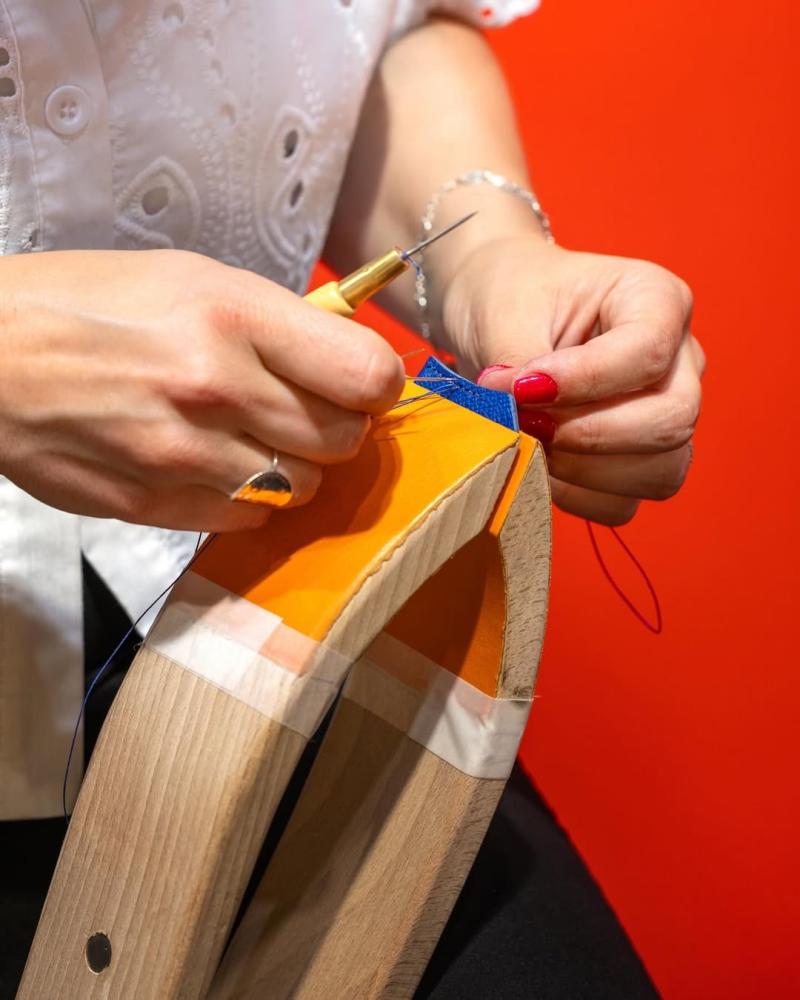
The saddle stitch is at the heart of Hermès craftsmanship. This hand-sewn technique, which uses two needles and one thread, creates a stitch stronger than any machine could produce. If one stitch breaks, the rest remain intact—something machines cannot replicate. The stitch has equestrian origins, developed for saddles that needed to withstand strain. Transferring this method to handbags means each Kelly is built not only to look beautiful but to endure decades of use. It’s no exaggeration to say that the saddle stitch alone separates Hermès from most of the luxury market.
Materials Behind the Hermès Kelly Bag
Materials are the foundation of the Kelly’s beauty and longevity. Hermès sources only the finest leathers and exotic skins, each inspected and handled with extreme care.
The Leathers: Togo, Clemence, Epsom, and Beyond
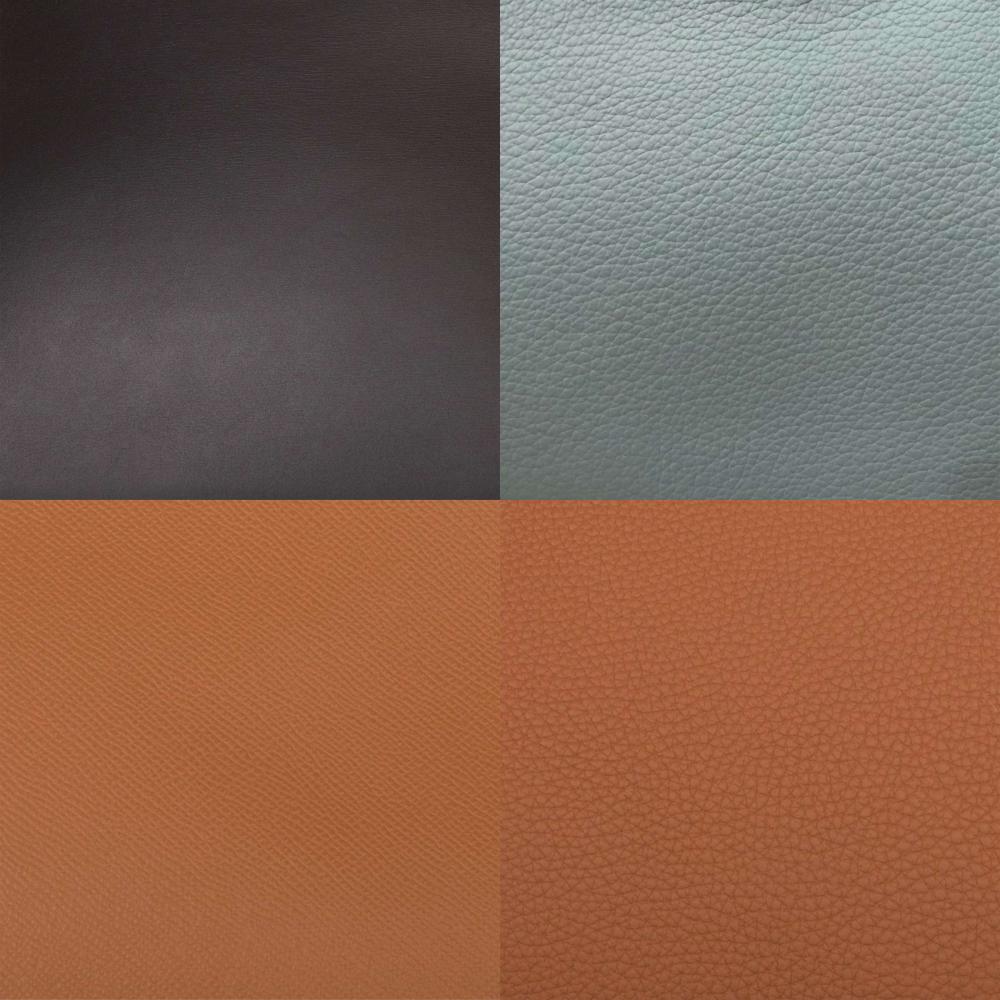
Each type of Hermès leather gives the Kelly a distinct personality:
- Togo leather: Softly pebbled, scratch-resistant, and lightweight—ideal for everyday wear.
- Clemence leather: Slouchier and heavier, offering a relaxed look while maintaining durability.
- Epsom leather: Structured and embossed, resistant to scratches, and popular for its ability to hold shape.
- Box calf leather: Smooth and shiny, one of the oldest Hermès leathers, often seen in vintage Kellys.
Choosing a leather isn’t just about aesthetics—it determines how the bag will age. Collectors often choose Togo for durability or Box calf for timeless elegance.
Exotic Skins and Their Challenges
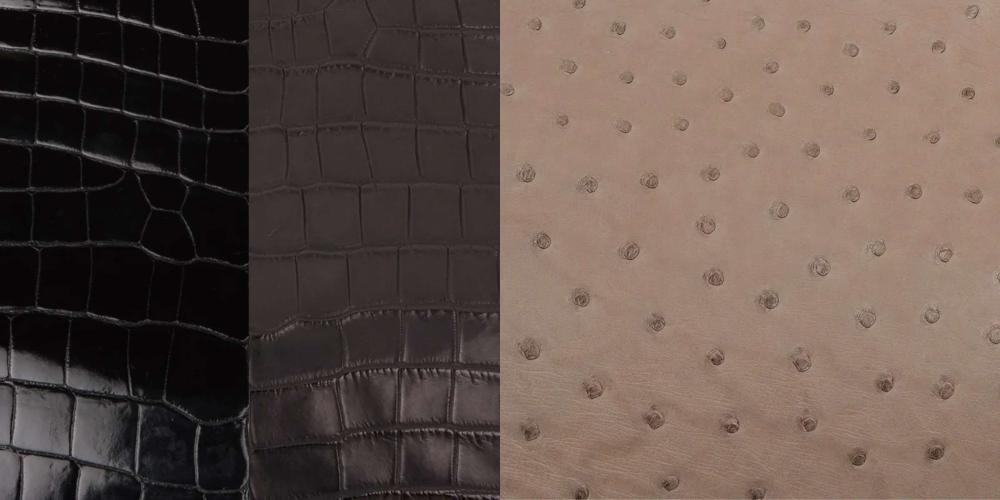
When it comes to exotic skins, the challenges multiply. Crocodile Kellys require perfect alignment of scales across panels, while ostrich bags must be stitched carefully around quill marks. These materials are rare, difficult to source, and even harder to work with. The artisan must be extra cautious, as a single mistake could ruin material worth thousands of euros. Exotic Kellys are often auctioned for record-breaking sums, sometimes exceeding $300,000.
Hardware That Balances Function and Luxury
The Kelly’s hardware is as iconic as its silhouette. The turn-lock closure, clochette, and protective feet aren’t just decorative—they serve practical functions. Hermès offers hardware in palladium, gold, and even diamond-encrusted versions for special orders. Precision matters: if the clasp isn’t perfectly aligned, it could affect the bag’s usability and overall balance.
Step-by-Step Kelly Bag Construction
The making of a Kelly is a dance of precision and patience.
Leather Selection and Cutting
Artisans begin by laying out the leather under natural light, scanning for imperfections invisible in artificial conditions. Each piece is cut by hand to respect the grain and ensure symmetry. Cutting machines are rarely used—Hermès values the eye and judgment of the artisan over automated precision.
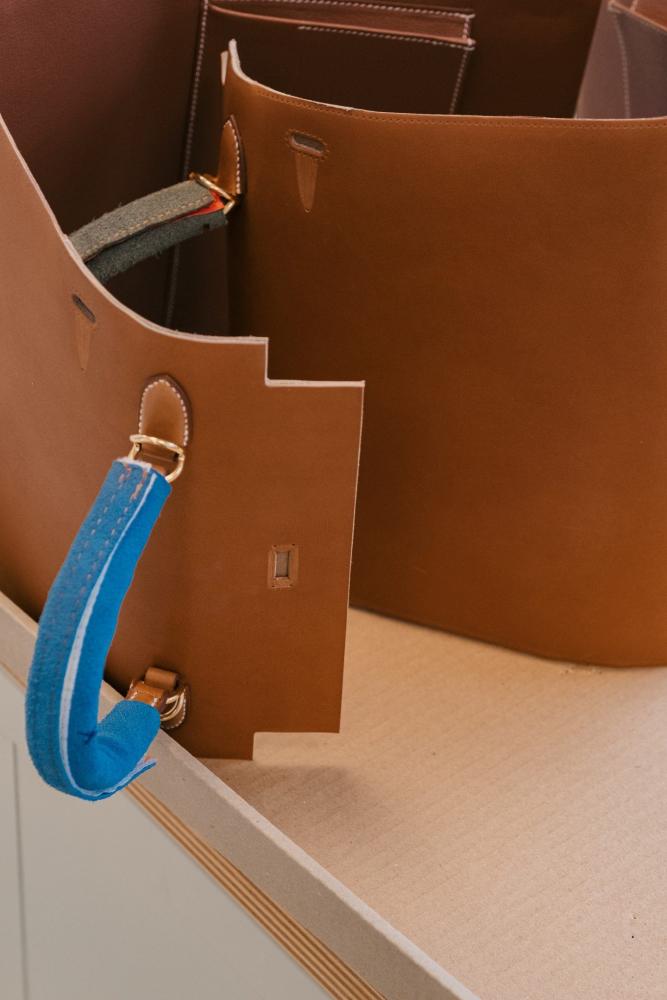
Hand-Stitching the Structure
Stitching begins with the saddle stitch. Using two needles, the artisan passes thread back and forth through holes pre-punched with an awl. Each stitch must be identical in tension and spacing. Depending on the size of the bag, thousands of stitches are required, each one done by hand.
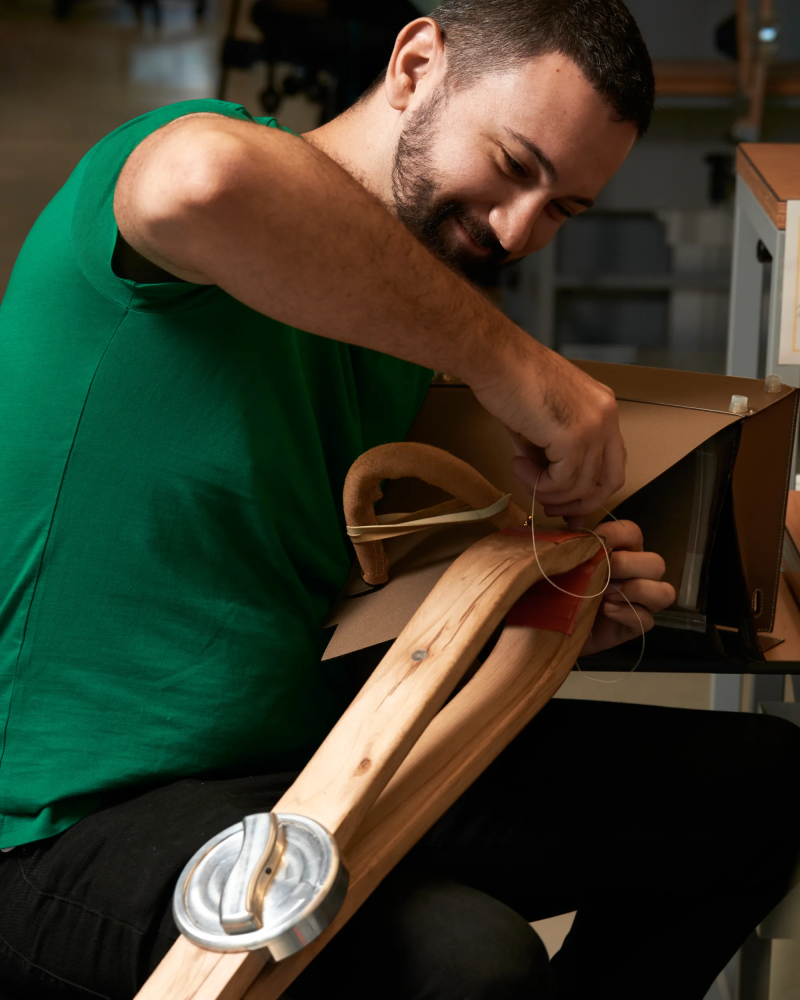
Polishing, Painting, and Finishing Touches
Edges are smoothed, sanded, and painted multiple times. This labor-intensive step ensures the bag’s edges won’t fray over decades of use. Polishing the leather brings out its natural luster while maintaining texture.
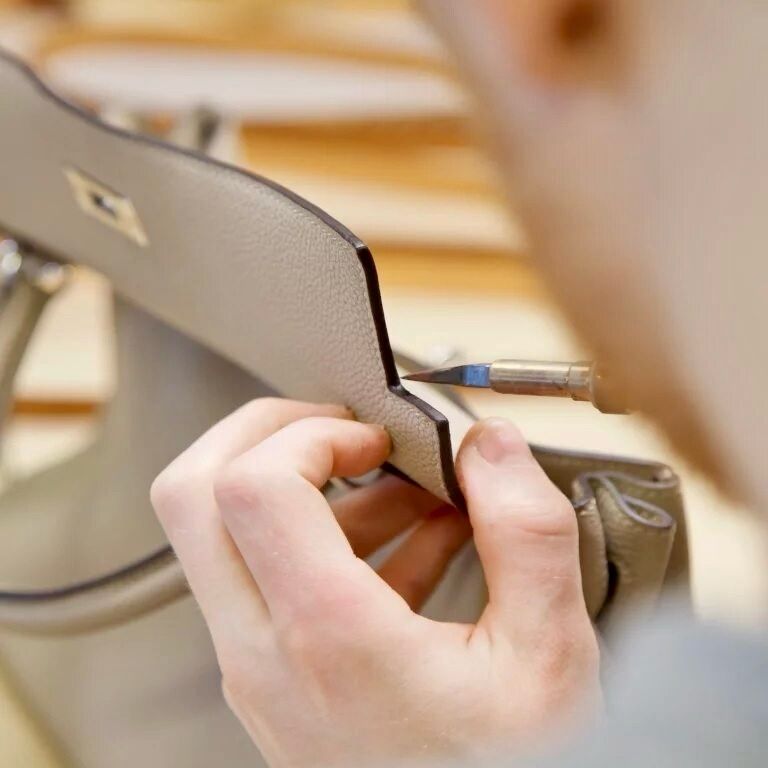
Fitting the Iconic Hardware
The hardware—clasp, lock, keys, and feet—is fitted with precise alignment. Each component is inspected multiple times, ensuring it opens and closes smoothly. In luxury variants, jewelers may be brought in to set diamonds or engrave details.
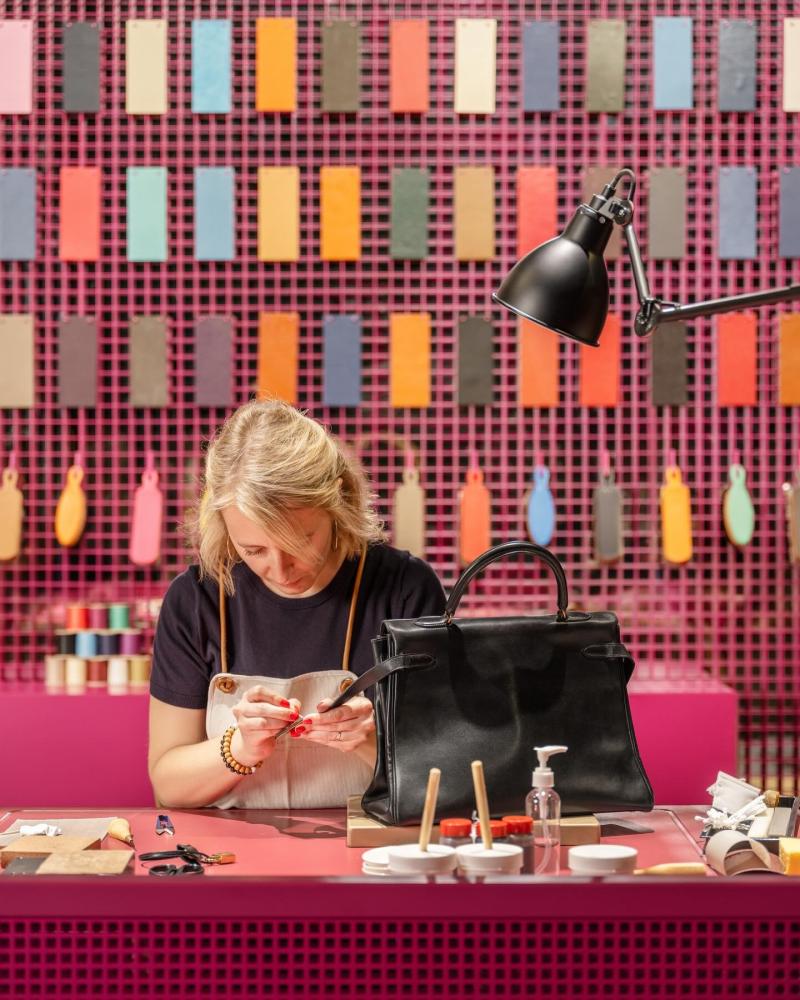
Why the Kelly Bag is One of the Hardest to Make
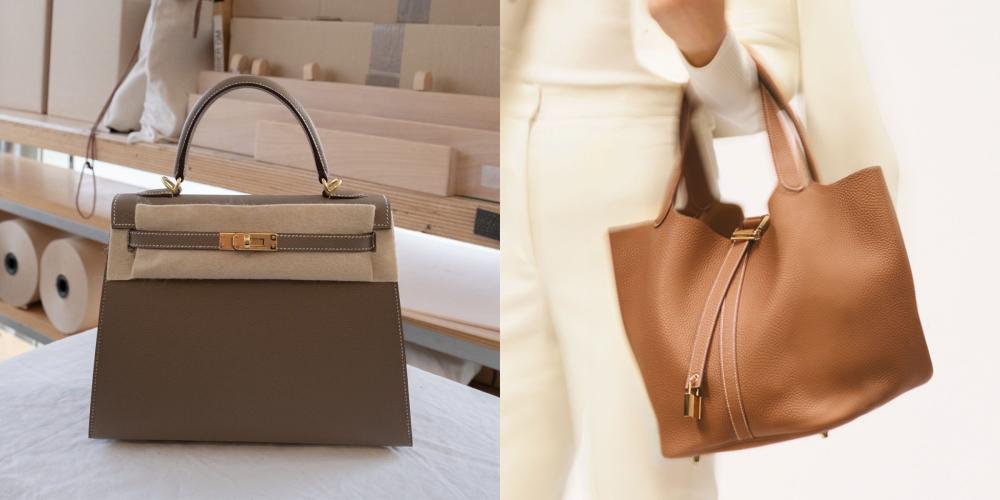
Precision Geometry and Structure
The Kelly’s trapezoid structure demands precision. Unlike slouchy tote bags, which can hide small flaws, the Kelly’s rigid lines demand millimeter-perfect construction. A minor miscalculation in stitching or cutting could throw off the symmetry, making the bag unsellable.
Zero Margin for Error in Craftsmanship
Hermès holds every bag to uncompromising standards. If a Kelly doesn’t pass quality control—if the stitching is uneven, if the leather grain looks mismatched, or if the clasp isn’t aligned—it never reaches the boutique floor. Perfection isn’t a marketing slogan; it’s a requirement.
Exotic Skins and Increased Complexity
Working with exotic skins magnifies the risk. Crocodile and alligator skins, for example, must be matched so the scales appear seamless across the bag’s panels. Ostrich leather requires delicacy around its natural quill bumps. These challenges are why exotic Kellys are the pinnacle of Hermès craftsmanship.
The Human Side of Hermès Craftsmanship
Every Kelly carries the story of the artisan who made it.
Artisan Training and Apprenticeship
Training to become a Hermès artisan is a long and rigorous process. Many begin as apprentices, spending years mastering basic leather techniques before advancing to more complex designs.
Years of Mastery Before Making a Kelly
Only after years of practice does an artisan become eligible to make a Kelly or a Birkin. These bags are considered the crown jewels of Hermès’ workshop, reserved for the most skilled craftspeople.
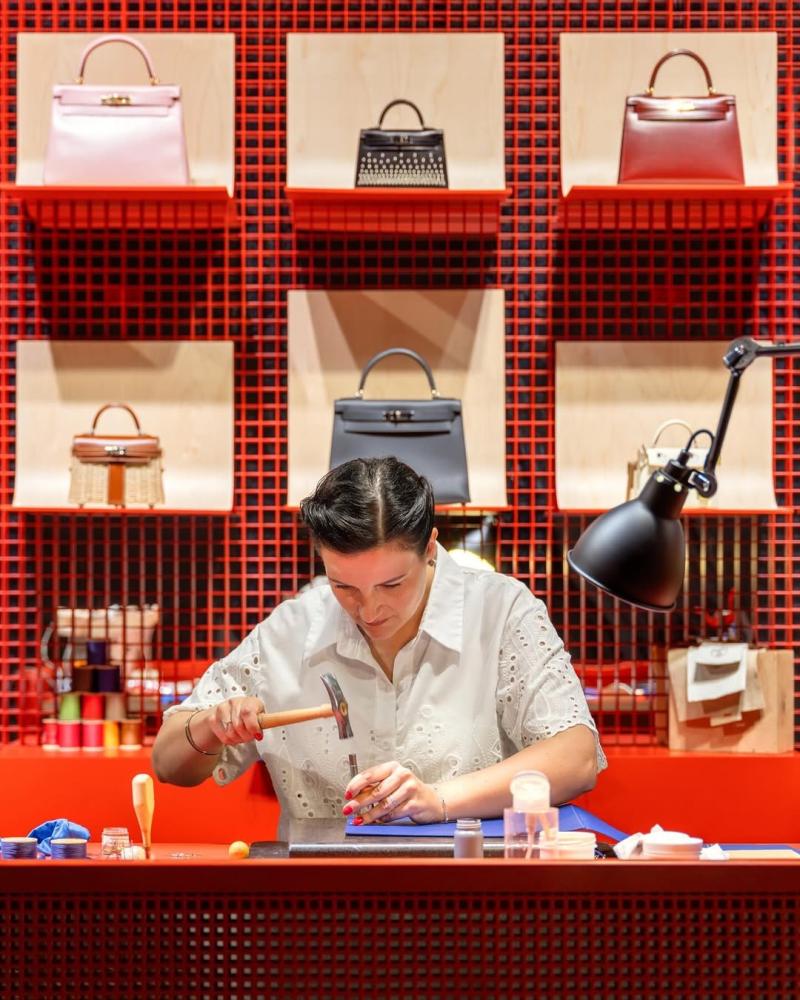
The Signature Mark of Pride
Every artisan discreetly stamps their Kelly with a personal mark inside the bag. To the owner, it may never be seen, but to the artisan, it represents pride and accountability. It transforms the Kelly into more than a product—it becomes a signed work of art.
Why the Kelly Remains an Iconic Hermès Bag
Scarcity and Exclusivity
Hermès limits the number of Kellys produced annually, creating natural scarcity. Even high-profile clients often wait months—or years—for their bags. This exclusivity fuels the Kelly’s mystique.
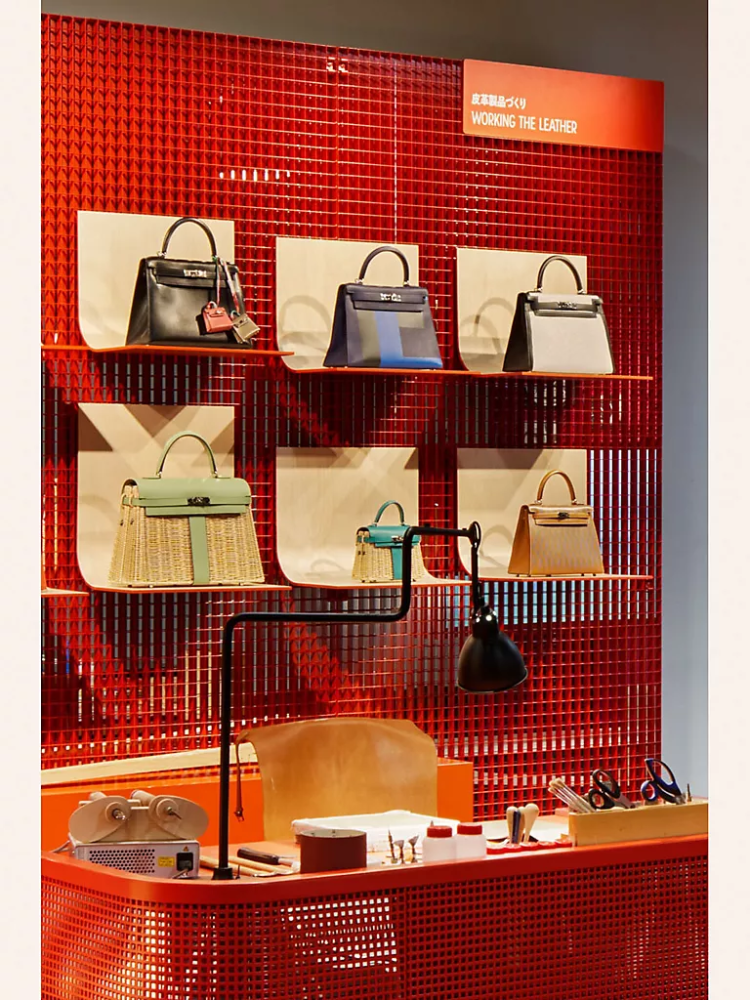
Investment Value of Hermès Kelly Bags
Unlike most handbags, Kellys appreciate in value. Resale markets are booming, with vintage Kellys often fetching more than their retail price. Collectors treat them as alternative investments, akin to watches or fine art. For more details, see this in-depth blog on Hermès craftsmanship.
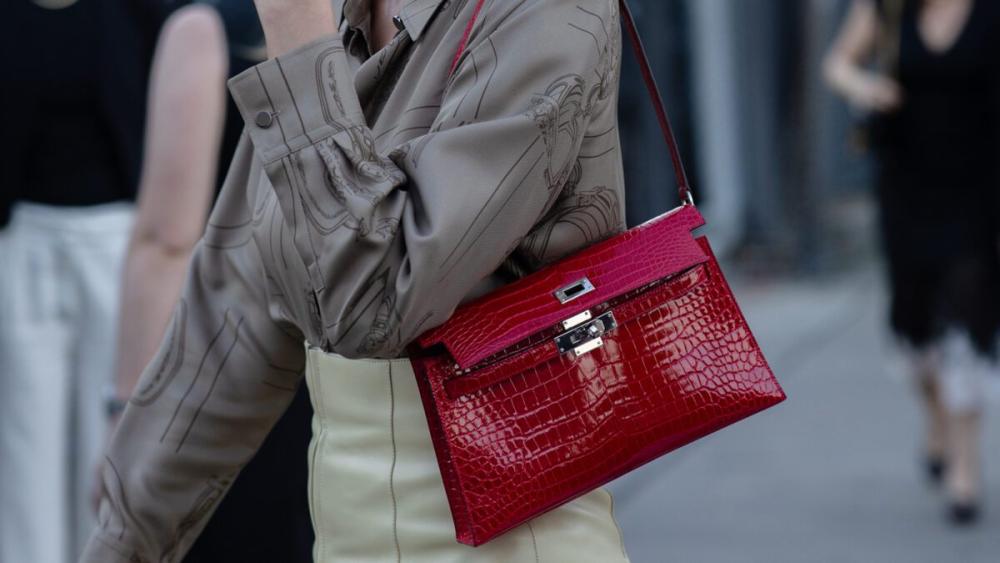
A Symbol of Taste and Legacy
Ultimately, the Kelly transcends fashion. It represents discernment and patience, appealing to those who appreciate craft as much as status. To carry one is to carry a piece of Hermès’ 180-year legacy.
Conclusion: The Enduring Allure of the Kelly Bag
The Hermès Kelly bag isn’t just one of the most famous handbags in the world—it’s one of the most meaningful. It embodies a philosophy of craftsmanship where patience and skill are valued above speed and profit. Every Kelly tells a story: of the artisan who created it, of the heritage it carries, and of the owner who treasures it.
In a world where fashion is often disposable, the Kelly is proof that true artistry never goes out of style.

Recent Posts